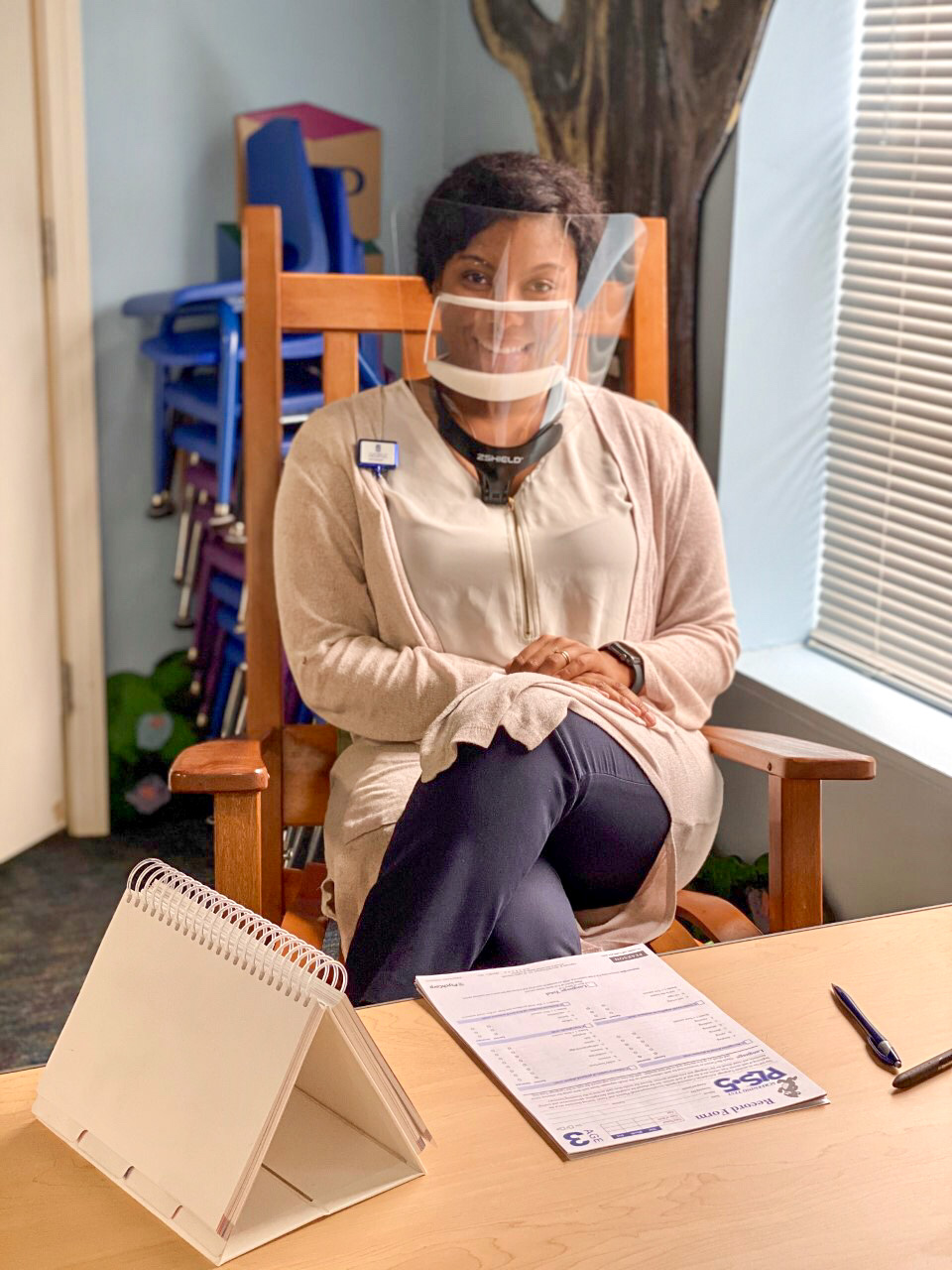School of Communication Sciences and Disorders
Head Start Screenings Present Challenges and Valuable Learning Opportunities for 1st Year Student Clinicians
Each year, graduate students from the University of Memphis School of Communication Sciences and Disorders conduct speech, language, and hearing screenings at Head Start programs in the surrounding area. Head Start programs are federally funded pre-school programs for children 3 to 5 years old who come from low-socioeconomic families. These screenings present a unique opportunity for first-year students to gain hands-on experience with pediatric patients from diverse cultural, ethnic, and racial backgrounds. They also help ensure that the children being served in Memphis Head Start programs can fully participate in and benefit from their early educational experiences.
 Screenings looked different this year with necessary sanitation and health precautions
for COVID-19 added to the typical procedures. There were fewer students physically
present in the Head Start programs, only one child could be screened at a time, and
everything had to be wiped down and gloves had to be changed between each screening.
These necessary modifications did not change the quality of the experience for our
students. For Mari Aoyagi, a first-year speech student, the screenings were an ideal
opportunity to not only learn the proper use of screening tools and materials, but
also best practices from practitioner demonstrations and advice.
Screenings looked different this year with necessary sanitation and health precautions
for COVID-19 added to the typical procedures. There were fewer students physically
present in the Head Start programs, only one child could be screened at a time, and
everything had to be wiped down and gloves had to be changed between each screening.
These necessary modifications did not change the quality of the experience for our
students. For Mari Aoyagi, a first-year speech student, the screenings were an ideal
opportunity to not only learn the proper use of screening tools and materials, but
also best practices from practitioner demonstrations and advice.
Katherine's favorite part of the screening was interacting with the children. She always finished the day in a joyful mood. Coming into the MA program without a background in communication disorders, she felt that the screenings were the perfect way to ease into a clinical setting. One of Katherine's classmates, Sarah Ann, is also "without background." For her, the hands-on experience increased her excitement about studying speech-language pathology and built up her confidence in her abilities to apply concepts and interact with pediatric patients. The students develop general and specific clinical skill by completing the screenings. Mari Aoyagi learned to adapt instructions for each test to the personality and maturity level of each child. In all, the first-year speech students interviewed described the Head Start screenings as an incredibly positive learning experience and for most, the highlight of their first semester.
SIDE BAR: PROCEDURE DETAILS
The screenings always begin with an inspection of the ear canal and a hearing screening. "It is important to conduct the hearing screening first so that we can confirm that the child is receiving appropriate auditory access speech signal," shared Janine Peca, a first-year speech student. Whether the students screen using audiometry or otoacoustic omissions depends on the cooperation of the child. If the students can condition the child to respond when they hear a "beep" an audiometer is used. Otherwise, an automatic OAE device is used; this device is inserted in the ear and all the child must do is sit quietly.
After the hearing screening, the student moves on to the speech and language screener, which takes 5-10 minutes and can be offered in both English and Spanish. Sarah Ann Essaied, a first-year speech student, shared that children are screened for articulation, language, semantics, and social communication skills—all critical to a child's success in schooling. Screenings are conducted in a pass/fail format. If a child happens to fail , referrals for a further evaluation of either hearing, language or speech are made. Pass or fail, upon completion the child is sent back to class with a new sticker for a job well-done!
Janine indicated that she got pretty good at making the audiometric equipment appear less scary to the kids. She shared that she described the headphones for the audiometer as having Minnie Mouse inside them. She would instruct the child to raise their hand when they heard Minnie sing.
